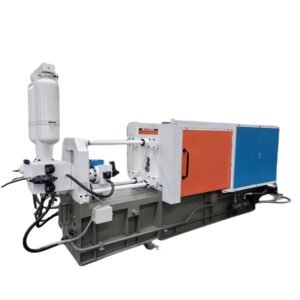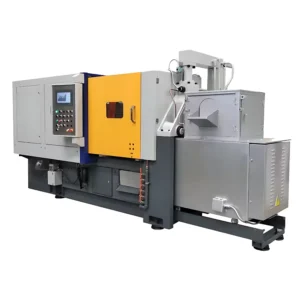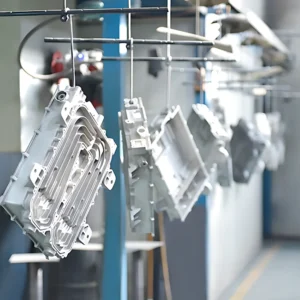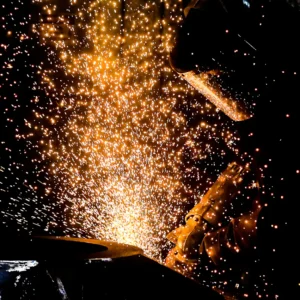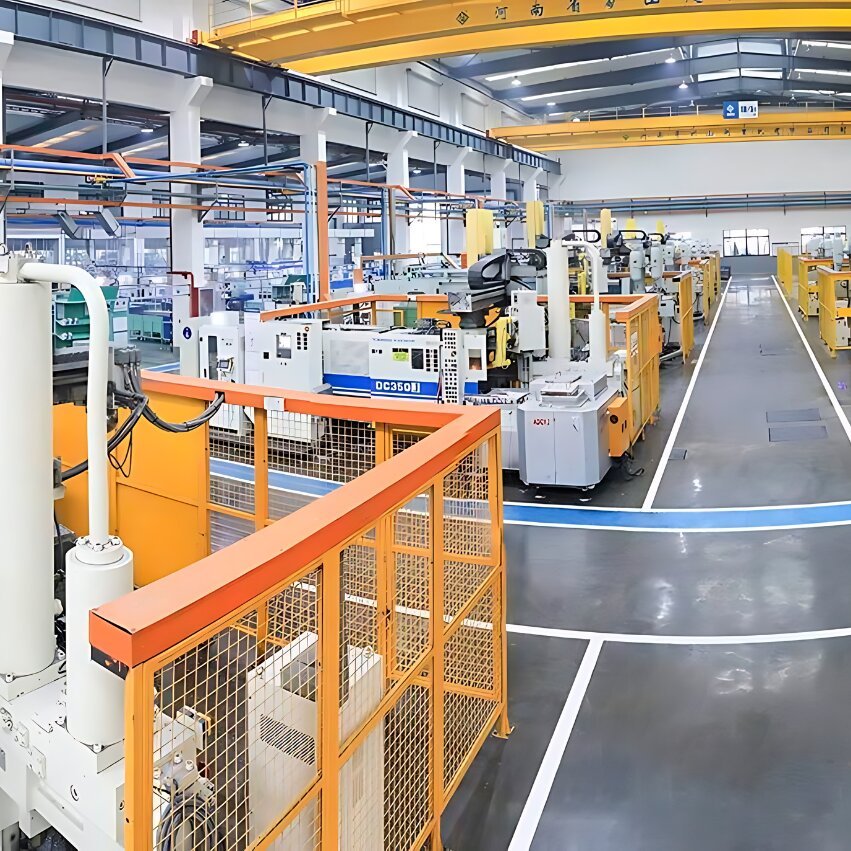Aluminum casting is lightweight components made from aluminum and other materials through the aluminum casting process. Aluminum castings are an important component for companies that need the strength, durability, and light weight of aluminum, as well as the ability to handle complex product designs.
There are a variety of different aluminum casting processes, each with its setup and needs. Because of this, they are responsible for manufacturing aluminum parts with a variety of qualities. This article will explain what cast aluminum is and how to choose the best cast aluminum method for your project.
What Is Cast Aluminum?
Parts made from aluminum and other metals through different casting methods are called “cast aluminum.” Typically, to cast aluminum or other metals, they must first be heated, then melted and poured into a mold that has already been made. The liquid aluminum then cools, hardens, and takes the shape of the mold.
An aluminum casting will usually have the properties of aluminum and other metals. Not only that, but it also forms an outer layer of aluminum oxide, which helps prevent corrosion and makes it harder than regular aluminum.
Cast Iron and Cast Aluminum
Cast aluminum and cast iron both look the same. Even so, they are not the same due to differences in the base material and its natural properties. Here are some of the differences between the two materials:
- Weight. Aluminum castings are lighter than cast iron, but still strong and durable.
- Dimensional tolerances. Because aluminum is softer than iron, dimensional tolerances for aluminum castings are more standard than cast iron.
- Accuracy and precision. Aluminum is lighter than iron, making it easier to machine and allowing for greater accuracy and precision.
- Thermal resistance. When it comes to thermal insulation, cast aluminum can withstand more heat than cast iron. As a result, it gets hotter and cools down faster than cast iron.
Wrought Versus Cast Aluminum
Cast aluminum has a higher carbon content than wrought aluminum. As a result, it has increasingly stronger mechanical properties. These are the three main ways in which the two materials differ.
- The product types are different. In the realm of CNC machining, “wrought aluminum” is usually used for CNC aluminum machining or aluminum extrusion. As a result, they are shaped like plates or bars. Cast aluminum, on the other hand, is a solid shape based on the shape of the billet or the shape of the final product.
- Different alloying elements. The alloying elements may be the same in both products. However, they differ in composition and quantity. For example, aluminum castings have a greater content of silicon. As a result, they flow better.
- Product characteristics are different. Cast aluminum is stronger. On the other hand, forged aluminum has better dimensional accuracy, higher tensile strength, and is easy to machine.
Different Processes for Cast Aluminum
There are three main processes for making aluminum from metal. The following are their main steps and unique features.
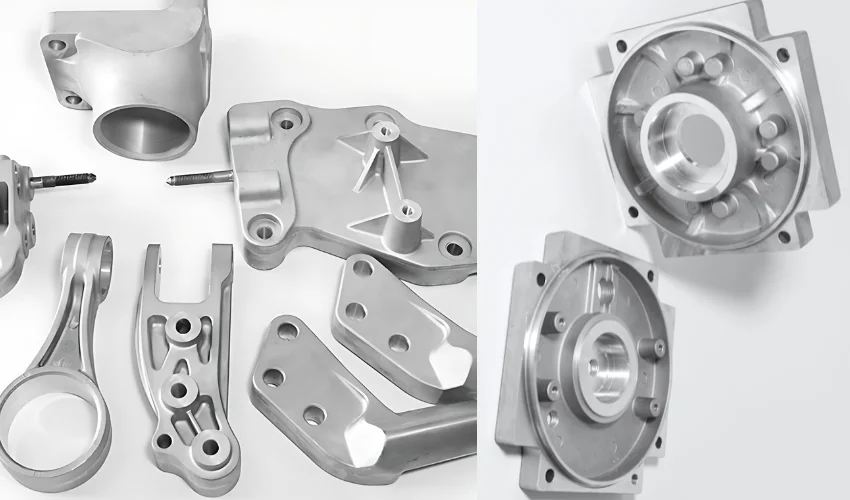
Die Casting
Die casting is the most common method of manufacturing aluminum products. Low-pressure casting and high-pressure casting are two common methods. High-pressure die casting is more suitable for this material.
In the die-casting process, aluminum is heated in advance and then injected into a mold under high pressure. The mold is made to fit the item to be manufactured. The cast aluminum part is removed from the mold when it cools, and the entire process is repeated once the mold has cooled.
One of the benefits of die casting is that the aluminum manufactured in this way has excellent electrical and thermal conductivity. In addition, they are strong and will not rust, wear out, or heat up.
Die-cast aluminum parts are used for many parts in the medical industry, aerospace, and cookware.
Sand Casting
The most common casting method used in production is sand casting. This is because sand can withstand high temperatures.
As part of the process, sand is used to make molds. Aluminum is then heated until it melts and then placed into the sand mold. After cooling, the cast aluminum part is removed.
Aluminum cast in sand molds is not very precise in terms of dimensions and has a rough surface. Therefore, it usually needs to be dealt with afterward.
Permanent Mold Casting
Permanent mold casting is very similar to die casting. The difference between the two methods is how the aluminum is injected into the mold. Permanent mold casting fills the mold by gravity rather than high or low pressure.
Aluminum castings made by this method are harder, have a smoother surface, and are very close in size. This method can be used to make aluminum parts for automobiles and aircraft.
How to Choose the Best Aluminum Casting Process?
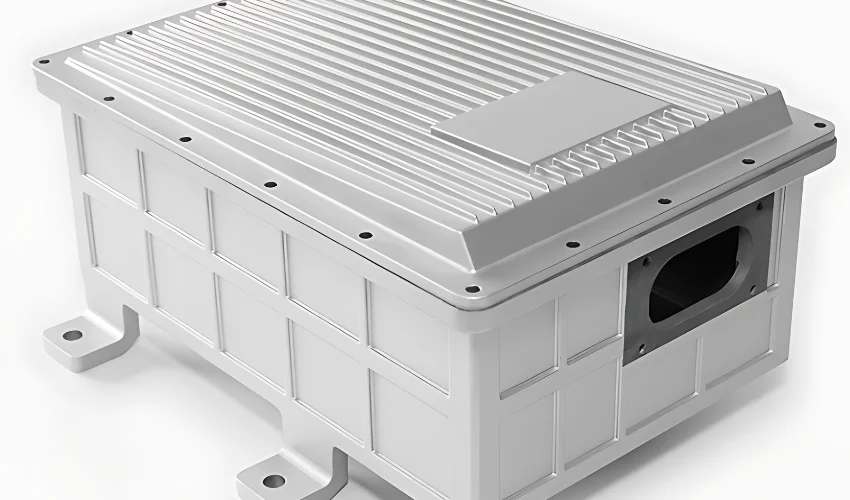
Each casting process has its advantages and disadvantages. Please consider the following points to select the best process for your project:
Design Complexity
The choice of casting method depends on the complexity of the final product design. Sand casting is most commonly used to make large, complex aluminum castings. This method is best suited for manufacturing products with complex designs. Permanent mold casting is more suitable for producing dimensionally accurate cast aluminum parts.
Manufacturing Speed
Die casting uses a pressurized injection process. Therefore, it can be used to manufacture large quantities of aluminum parts. The next fastest method is sand casting and the slowest method is permanent mold casting.
Prototyping
Sand mold casting is the best method for making prototypes because it has a low starting cost. Other methods require a lot of money to get started, which is not appropriate. This is because prototyping only requires a small number of parts. More specifically, you can find out how to calculate the cost per hour for CNC machining?
Strength and Surface Finish
Permanent mold casting is the best choice in terms of strength and surface finish. Nonetheless, sand mold casting and pressure mold casting also have comparable strength, with pressure mold casting having a better surface finish.
Surface Finishing Processes Available for Cast Aluminum Parts
Finishing processes can be used for both appearance and function. The following are some of the surface finishing processes available for your reference.
Powder Coating
Powder coating is a part of the dry finishing process where a dry powder is applied to the aluminum casting. Aluminum castings will become more durable and less prone to rust after treatment.
Painting
This is a common surface treatment to make the product look better. Nevertheless, it has practical value as well. Applying a coat of paint to aluminum parts is part of it.
The aluminum is first cleaned and sanded. Then, a layer of self-acid primer, a paint layer, and optionally an enamel sealer can be used to apply an additional protective layer if desired. Paint can be used to add color or to make the object more resistant to corrosion.
Electroplating
Electroplating is the application of a small layer of one material to another. An electrode is used to pass an electric current through an electrolyte, which is a solution that conducts electricity. Therefore, if copper plating is to be applied to cast aluminum, a copper-based electrolyte and a copper anode are required, while the cast aluminum serves as the cathode. The copper in the coating comes from the copper solution and the copper anode takes its place. This process gives cast aluminum a better look and protects it.
Anodizing
Anodizing is an electrical process that turns the surface of cast aluminum into an anodic oxide that lasts a long time and does not rust. In this method, the cast aluminum is placed in a bath of sulfuric or chromic acid solution while an electric current flows through the cast aluminum.
Advantages of Cast Aluminum
Aluminum castings perform better than parts made from other materials. Therefore, aluminum castings play an important role in many fields. The following are the advantages of aluminum castings:
Bright and Clean Surface
They look like smooth and shiny metal. Thus, it reduces the need for expensive surface-finishing processes. Due to their high surface finish, they can also be used for popular household items such as cookware.
Complex Shapes
Aluminum can be easily made into any shape in the industry. As a result, it is easier for manufacturers to create parts with complex shapes and correct dimensions.
Lightweight Parts
Aluminum castings are lighter in weight and do not compromise strength, durability, or other mechanical properties. As a result, aluminum castings can be used to make parts that are both light and strong. For example, the automotive industry makes extensive use of aluminum castings to reduce the fuel consumption of vehicles.
Common Applications of Cast Aluminum
Cast aluminum has good physical and chemical properties and is therefore used in a wide range of industries. The following are some of the common uses of this material.
Medical field
Cast aluminum is used in the manufacture of prostheses, surgical trays, and other medical components as they are both strong and lightweight. In addition, the process can be used to create the complex and precise shapes that the industry is known for.
Additionally, aluminum is a corrosion-resistant material because it does not rust. And many medical devices come into contact with bodily fluids.
Automotive Industry
Companies that manufacture automotive parts use aluminum castings because they are strong, durable, and lightweight. The aluminum casting method also makes it easier to manufacture automotive parts with complex shapes. Parts such as brakes and steering wheels can be manufactured from aluminum castings.
Culinary Industry
In the culinary industry, cast aluminum is very useful because it is durable, does not rust, is lightweight, and conducts heat well. Moreover, this material is also suitable for making cookware as it transfers heat quickly.
Aircraft Industry
Aluminum components are strong and lightweight, making them ideal for the aircraft industry. Due to their lightweight, airplanes can carry more weight with less fuel.
Summary
Aluminum castings are parts made from aluminum and other materials cast in a variety of ways. They are strong, long-lasting, lightweight, and very useful in areas such as flight and automobiles.
This article describes what cast aluminum is and information about it. Do you want to make precision parts from cast aluminum? Then let us help you create strong and durable products. China Casting Synergy Group has a professional service team and years of machining experience to meet your different needs.

